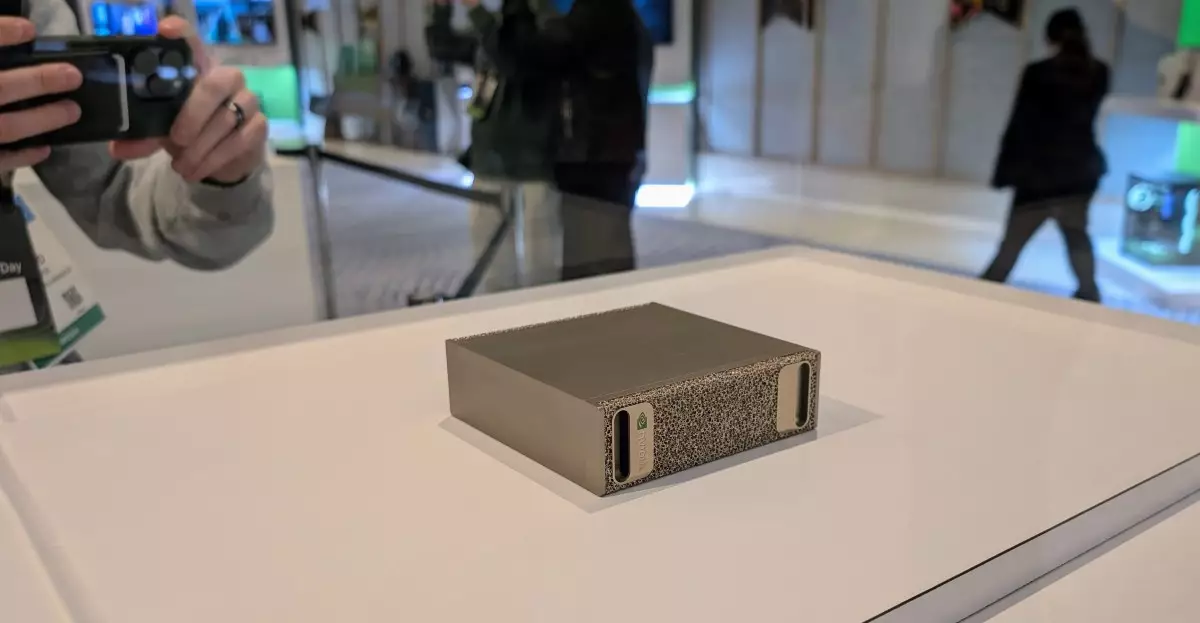The tech landscape is undergoing a seismic shift, thanks to the burgeoning capabilities of artificial intelligence. With companies like Asus, Dell, and HP breaking barriers by launching their NVIDIA-powered supercomputers, the dialogue surrounding computing power is more pertinent today than ever. Harnessing the immense capabilities of NVIDIA’s Grace Blackwell platform, these manufacturers are committed to pushing the envelope further, offering consumers and businesses a taste of unparalleled processing abilities now encapsulated in compact machines.
The Intriguing Player: NVIDIA’s Grace Blackwell Platform
At the heart of this significant leap in computing technology is NVIDIA’s Grace Blackwell platform. This foundation is replete with immense computational potential and has become a magnet for third-party manufacturers keen on placing their mark in the AI realm. The recent announcement allows hardware vendors to design their variations based on NVIDIA’s cutting-edge architecture. With the Grace platform, NVIDIA has not just cemented its dominance in AI computing; it has also catalyzed a wave of innovation amongst its partners.
Spotlight on Innovative Designs: Asus and the Ascent GX10
Asus stands as one of the first to unveil its offerings in this new landscape with its Ascent GX10 mini PC. The excitement surrounding the Ascent lies in its impressive AI performance metrics, boasting 1,000 AI TOPS and 128GB of unified memory, mirroring the capabilities of NVIDIA’s own DGX Spark. Aesthetically distinct, the Ascent GX10 swaps out the metallic chassis familiar in high-tech devices for a more consumer-friendly white plastic design. This move indicates a shift towards making significant computing power more accessible and appealing to general consumers. However, there remains a cloud of uncertainty regarding pricing and pre-orders for this remarkable machine, leaving potential buyers on edge.
HP’s Entry: The ZGX Nano AI Station G1n
HP’s foray into this sector is encapsulated in the sleek design of the HP ZGX Nano AI Station G1n. Visually reminiscent of high-end workstations, the G1n combines premium aesthetics with formidable power. Its server-rack compatibility is a nod to businesses that value space-efficient yet robust machines. Yet, while HP’s design captivates, the lack of definitive release timelines creates a sense of lingering anticipation, urging both enthusiasts and industry professionals to question when they might secure their units.
Dell’s Minimalist Approach: The Pro Max Series
Dell’s strategy diverges with the “Dell Pro Max With GB10,” characterized by its simplicity and understated design. While the plain black box may seem insufficiently innovative at first glance, its utility as a reliable server solution cannot be understated. Additionally, Dell is already teasing a more extensive workstation through the Dell Pro Max with GB300 variant, boasting an astounding 20 petaflops of AI prowess. The juxtaposition of its feature set against its unimpressive exterior raises questions about whether aesthetics play too small a role in their market strategy. Despite these design discrepancies, Dell’s devices promise arrival by early summer 2025, aligning with NVIDIA’s DGX Spark release, thus effectively challenging competitors in a rapidly shifting landscape.
The Future of Computing: Other Contenders and Expectations
Asus, Dell, and HP may be leading the charge into this new frontier, but they’re not the only players. Lenovo, one of the titans in computing, is expected to unveil its own GP10 mini-computer soon, though details remain scarce. This lack of transparency emphasizes both the competitive nature and the high stakes of the supercomputing market, as each manufacturer races to differentiate themselves and seize the interest of consumers and businesses alike.
None of these developments merely scratches the surface of what’s to come in computing. The entrance of AI supercomputers into the hearts and homes of consumers may very well redefine the parameters of digital capability. While manufacturers continue to introduce their variants powered by NVIDIA’s innovations, the conversation surrounding these products reveals a world eager for advancements that blend powerful processing with consumer accessibility. The forthcoming years will undoubtedly be pivotal as we witness how design, price, and actual computing performance intersect in this bustling landscape.


Leave a Reply